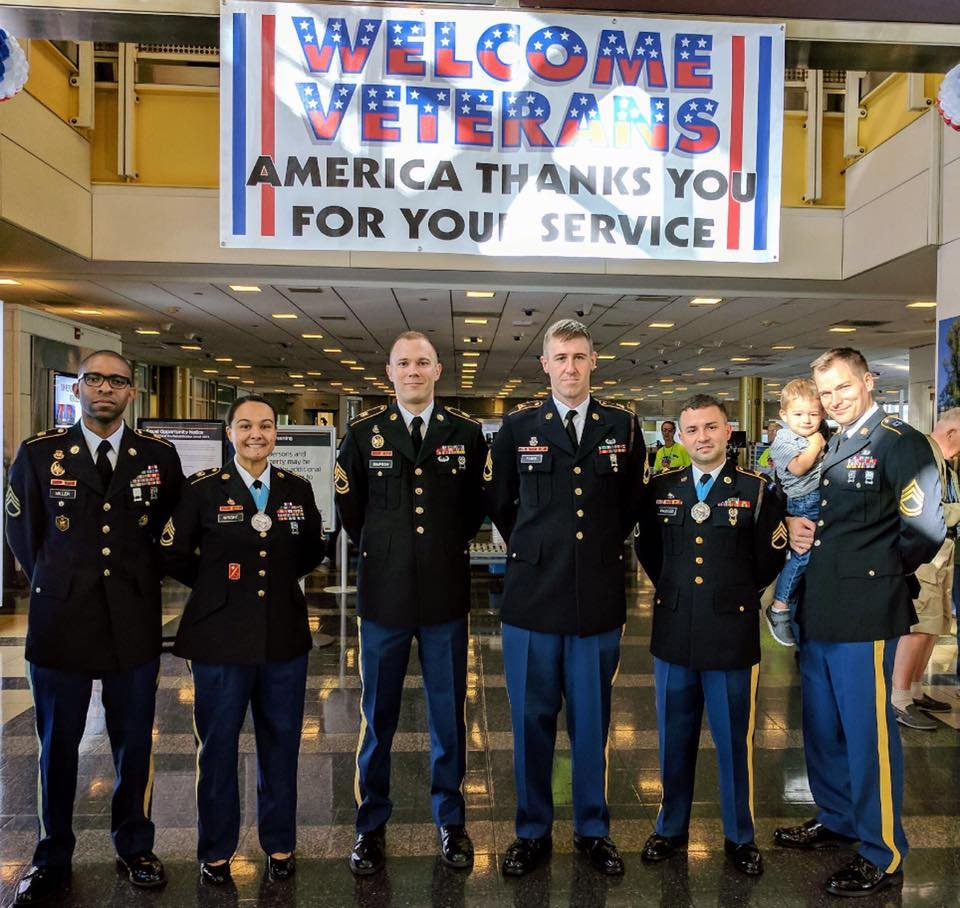About Us
The Sergeant Audie Murphy Club at the Military District of Washington is one chapter of an elite organization of noncommissioned officers whose performance and leadership qualities distinguish them among their cohort, as those of the club's namesake did on the battlefields of World War II.
The induction and membership into the SAMC is a reward for Noncommissioned Officers (NCOs) whose leadership achievements and performance merit special recognition. The SAMC is a means of recognizing those NCOs who have contributed significantly to the development of a professional NCO Corps and a combat ready Army.
Members exemplify leadership characterized by personal concern for the needs, training, development and welfare of Soldiers and their families. Club functions include social, service and professional development activities as well as periodic review of the NCO corps in the National Capital Region for other NCOs to honor with membership.
Club History
The original club was started at Fort Hood, Texas in early 1986. There were several key leaders at Fort Hood, Officers, Enlisted members, Civil service, and a Killeen Civilian, who were instrumental in getting the club up and running. Leading the effort was Lieutenant General Crosbie Saint, the III Corps Commander, his Command Sergeant Major, George L. Horvath, III Corps Awards Clerk Jean Crisp, and Don Moore, a local Killeen artist who assisted with designing the logo and club awards.
In 1991, the III Corps Commander Lieutenant General Pete Taylor and Command Sergeant Major Richard B. Cayton expanded the Fort Hood installation club to include all of III Corps. This expansion included Fort Riley, Kansas, Fort Sill, Oklahoma, Fort Bliss, Texas, Fort Polk, Louisiana, and Fort Carson, Colorado.
In 1993, CSM Cayton was voted into the Sergeant Audie Murphy Club by Honorary membership before he became the Forces Command Sergeant Major. Shortly thereafter, the club became Forces Command (FORSCOM) wide, including the Reserves and National Guard.
In 1994 at a Sergeant Major of the Army conference, the Sergeant Audie Murphy Club spread to all commands Army-wide, with installations retaining the selection process for their own NCOs. In 1998, it was estimated that the club membership ranged over 3000 Soldiers and was steadily increasing.
The Crest
S*A*M*C: Initials separated by three stars which represent the Be, Know and Do for the NCO.
SSG Rank Insignia: Reflects Audie Murphy's highest enlisted rank.
The Eagle: Our national bird and symbol of freedom, the intent of the club to be nationwide.
The Laurel: Represents the individual achievement of the NCOs in the club.
The Lightning Bolt: Represents swift and decisive action taken by the NCO.
The Sword: A historical reference, a tool for the NCO to cut to the heart of the matter, to lead the charge.
The Streamers: Indicate upon which we base our philosophy.
The Medallion
When a soldier is inducted into the Sergeant Audie Murphy Club, he/she is given a formal medallion. The size of the medallion varies in these photos. The FORSCOM (Forces Command) version is silver and approximately 2.75 inches in diameter. The TRADOC (Training and Doctrine Command) version is bronze and is approximately 1.75 inches in diameter. The medallion is suspended by a broad powder-blue ribbon, approximately 18" in length folded. The ribbon's color represents the symbolic color of the infantry. The medallion is worn around the neck on the outside of the Class A or Dress Blue uniform for official functions such as military balls or Sergeant Audie Murphy Club meetings.





